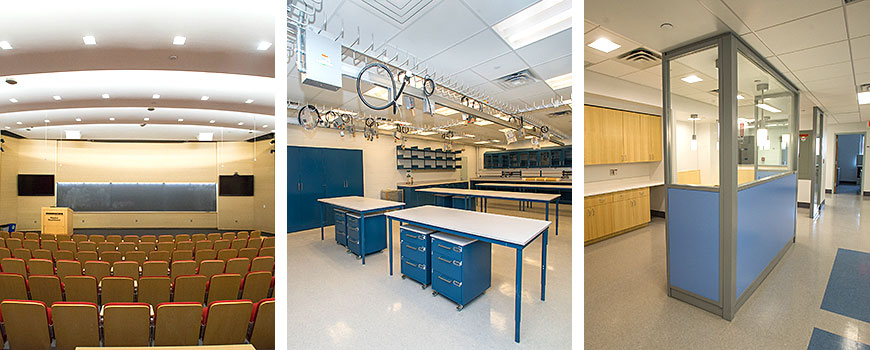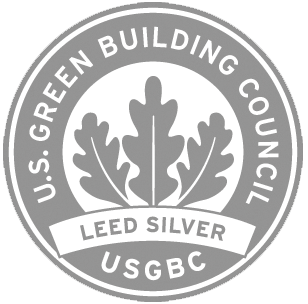Efficient Buildings

Renovated Science Laboratories Project
The Renovate Science Labs –Phase II (RSL-II) project at Brookhaven National Laboratory was a multi-year renovation project of two core research facilities on the Brookhaven campus. Completed in 2014, approximately 89,000 square feet of research laboratory, office, and mechanical support space was renovated in the Physics Building (Bldg. 510) and the Chemistry Building (Bldg. 555).
Both buildings achieved the LEED Silver Certification under the U.S. Green Building Council's LEED for Commercial Interiors Rating System. This certification was awarded in January of 2015. The LEED for Commercial Interiors rating system provides credits for satisfying specified criteria. Projects are evaluated within seven categories: sustainable sites, water efficiency, energy and atmosphere, materials and resources, indoor environmental quality, innovation in design, and regional priority credits.
The RSL-II project employed a number of energy saving and environmentally friendly strategies. Low flow plumbing fixtures and water conservation strategies were employed to reduce potable water consumption by 30 percent. Natural daylight is used throughout the office and laboratory areas, as are modern lighting controls and occupancy sensors. Indoor air quality was improved by the specification of construction products and materials with low volatile organic compounds to reduce outgassing. Thermal efficiency was improved throughout the facilities with the complete replacement of the aging window systems with new energy efficient glass.
Significant energy savings will be realized within the renovated areas due to the incorporation of high efficiency lighting, high performance HVAC systems, and motion sensing low flow-fume hoods. More than a 40 percent reduction in energy cost is anticipated compared to actual historic baseline costs. The facilities are now integrated with the Laboratory’s site-wide energy management control system.
In addition, more than 60 percent of the building shells and structures were reused, and a construction recycling policy was mandated and enforced. More than 75 percent of construction waste was diverted from landfills throughout the course of the project.

Projects are evaluated within the categories of sustainable sites, water efficiency, energy and atmosphere, materials and resources, indoor environmental quality, innovation in design, and regional priority credits



